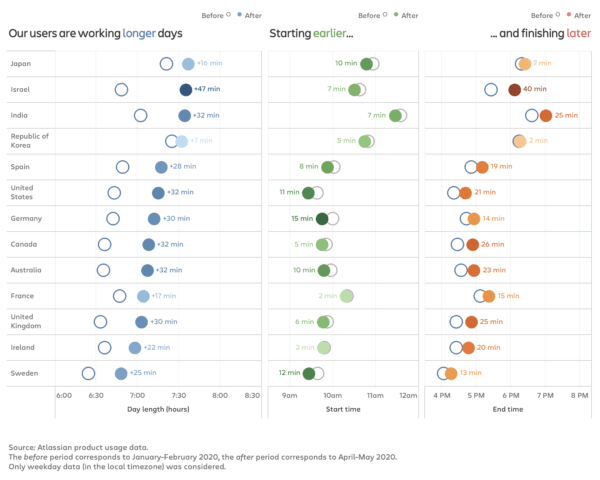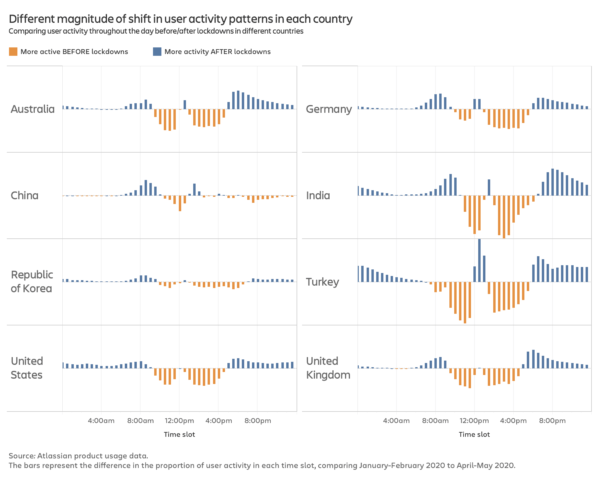The COVID19 pandemic has already induced the ‘Work from Home’ template across the world. Now that enough months have been clocked, is WFH the idyllic solution that every employee wished for? Going by this recent report, let’s just say that the reality is some way from being all lunches and lie-ins.
A survey conducted by workplace software developer Atlassian appears to give meat to a fact which has crept in on the desi workforce – people in India (and around the world!) have been starting remote work earlier and logging off quite later during the period of lockdown.
The survey, which was conducted across 65 countries, found that the average workday for Indians lengthened by 32 minutes, finding a company with its Australian and American counterparts. While the impact was less pronounced for South Korea, which recorded an increase of 7 minutes, Israel lodged a 47-minute high increase in the average workday.

The data for the survey pit the aggregated work hours of April – May of 2020 against January – February 2020. The indicators for analysis included actions like creating a document, updating a ticket, and commenting on a code review, utilizing the first and last time of user activity from Monday through Friday.
In addition to the increased workdays, the numbers also painted an interesting and telling picture of the intensities of the workforce as they worked from home. For the Indian contingent, the data clearly revealed that those working from home made good progress in the morning and the evening parts of the day, productivity took a noticeable dip during the afternoon time. In contrast, while the hours logged in were none or comparatively higher earlier, the trends of productivity show consistency in repetition across the globe.

The stats have provided credibility to what was suspected for some time – working an extra hour in the evening doesn’t necessarily mean the employees are working less in the morning; it’s just that mornings now comprise a smaller relative proportion of the workday. As such, even though the figures varied from country to country, what is now obvious and irrefutably real is that every nation has registered an increase.

What does this portend?
While the pandemic was the sole reason why the workforce was jolted into adopting the WFH practice, the transition has been far from smooth. The patterns observed in the survey are huge portents as to how the work-life balance has been steadily blurring all this time.
With 83% of the Indian workforce still hesitant in making a return to the office, as was revealed by another survey by Atlassian, the overall expectancy, desire, and attitude are still shrouded in some contradictory reports. WFH certainly has its perks, with no commute time, definite cost cuts among some, it has not been everyone’s cup of tea. In a survey conducted by Mavericks India, 54% of Indian professionals polled voted in favour of loving the WFH atmosphere, where 34% were even willing to wade through a salary cut post- pandemic if they could keep the WFH option.
However, if we are to go by Microsoft India’s Work Trend Index, we find that over 41% of Indians polled cited the lack of separation between work and personal life has been a cause of increased stress levels too. Reading between the lines, while it can be said that WFH affords professionals greater flexibility, it also comes up with the price of fading boundaries between work and home, particularly when the time frame has dragged on for so long.
In a country such as India, where there is no apex regulator of the work hours as everything is left to the employer, there have been instances where arbitrary enforcement of work hours is taking place, placing a huge load on the other responsibilities of the individual, as has been pointed by many employees.
In the current scenario, WFH is sure to stick a bit longer. The key, as with most things, lies in striking the right balance between “switching off” and being productive, lest the employees give way to burnout. Slowly, but surely, we need to find a way to make remote work for everyone.
Stay tuned for more updates!

